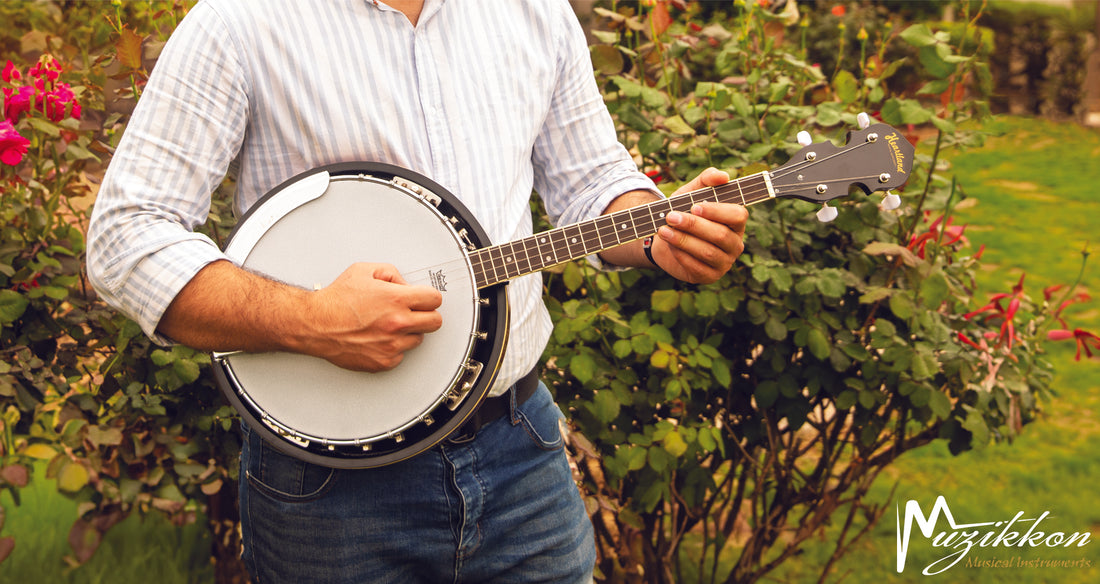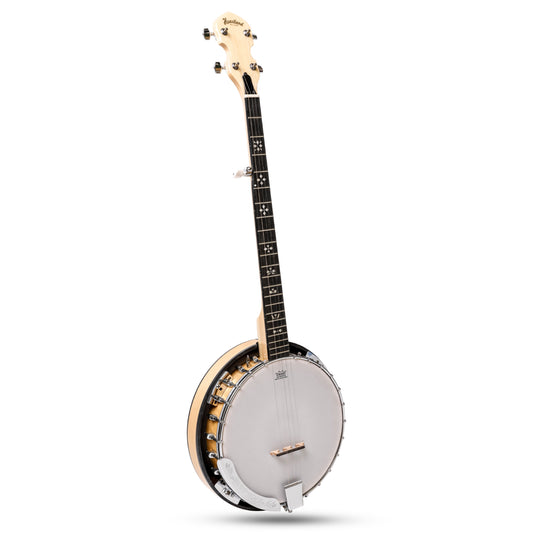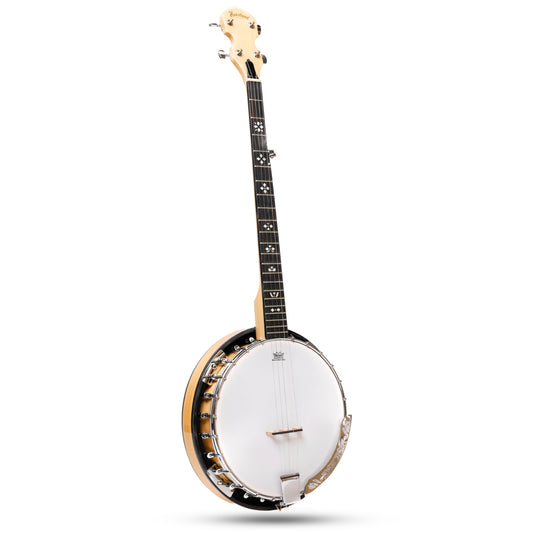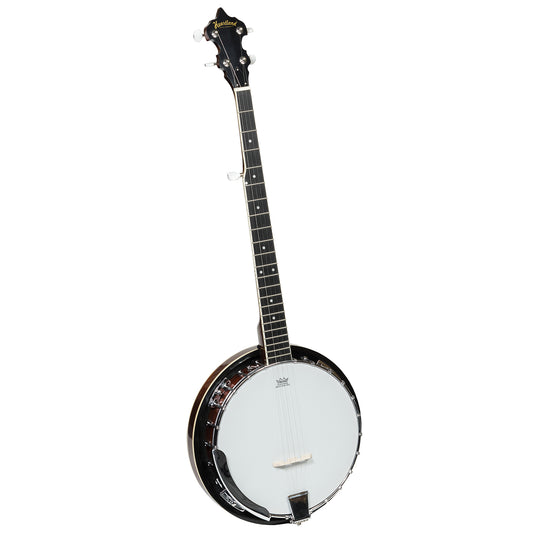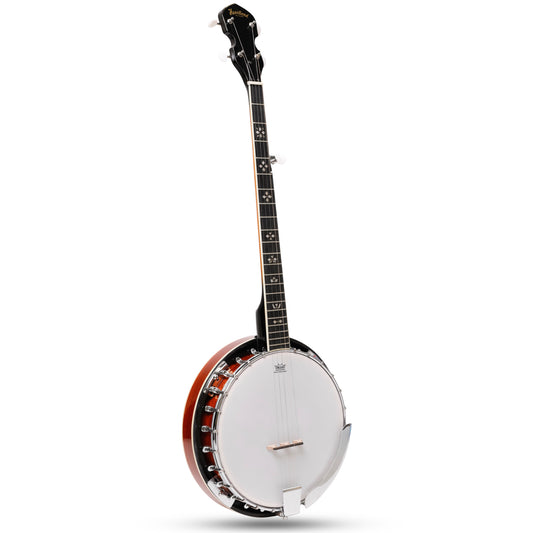Has a banjo instrument ever appeared in your mind when you think of folk music? Banjo is a stringed instrument, made with the finest wood and strings that produce pleasing music. This admirable instrument can make anyone’s heart dance with its twang.
What makes Banjo a masterpiece is its connection with the African-American culture. This aesthetic musical piece tells its story of culture and traditions through its beautiful sound. Its classic sound with a touch of culture still brings the world together, giving a touch of history and nostalgia.
But, do you ever wonder where the roots of banjo connect? Undoubtedly, its iconic tune that soothes our soul makes us curious about its history and evolution. So, let’s delve into the depth of banjo history to connect some dots about its worth in the music world.
Banjo History and Its Cultural Significance
All the folks who love banjo music and admire this instrument as a significant part of their music taste must hear its tale. This blog will take you on a fascinating ride, capturing all the banjo history facts. So, gear up and explore the informative and interesting side of your ideal musical icon.
String Banjo History
The answer to the question “Did the banjo originate in Africa?” is YES. Today, almost every individual is familiar with this stringed instrument, but its origin story is a must-listen. Although banjo is a well-known musical instrument globally today, its origins take us back to West Africa.
It’s about the time when the local people of Western Africa used to make stringed instruments with hollowed-out gourds. Underneath its strings, they used to stretch the animal skin for better sound in the early stages of their production.
One of these instruments was known as “Akonting”, which had three to five strings. It would not be wrong to say that this instrument represents the initial model of today’s banjo instruments. Like other string instruments, Akonting was also played through its string, but it did not have a fretboard, as it was nonexistent in Africa.
Banjo History Facts
However, you will also find some dark facts about banjo development if you dig further into its history. The first banjo instruments were invented by the West and Central African slaves in America in the 17th century.
When the banjo origin was introduced to the US, it was initially considered as a lower-class instrument. But later on, the younger generations showed interest and learned to play banjo from their elder slaves.
Among this younger generation, Joel Walker Sweeney was the first child to start playing banjo on stage and contributed to making it popular. He also made a change in banjos by using a wooden sound box in place of a gourd body, which brought it a bring closer to its current form.
Also, one of the most important facts about the history of banjo is that it got worldwide recognition from the Minstrel Show in the United States. From this time, banjo underwent some iconic evolutions, leaving the world astonished.
The Banjo Evolution
Throughout time, more and more changes were made in banjos and different types of banjos were also introduced. It was made more amplified and more common in the musical bands by redesigning it. The reason behind these changes was that it had become a necessary requirement for the musical instruments to be loud.
Furthermore, banjo grabbed more attention after being influenced by other string instruments like guitar and violin. Its innovation also had some additions, like frets, resonators, metal strings, and some others. Later on, people started playing it more like a rhythm, similar to a guitar.
This change made it lose its fifth string, as it was played with a plectrum, giving it a new name “Plectrum Banjo”. Banjo then became popular in Ireland in the 1920s and was known as Irish tenor 4-string banjo. There, it started using as a melodic instrument.
How to Play a Five String Banjo?
Although the 4 string banjo is most commonly played in Irish music, the 5 string banjo has not yet lost its charm in Irish traditional music. The best part about playing a banjo instrument is that it can be played through various techniques. The two most common techniques are “Clawhammer” and “Bluegrass”.
Clawhammer style is a creative one in which you press down the string with your thumb and middle finger to make a rhythm. It creates an alluring sound that’s mostly used in traditional folk music and soothes the ears of music enthusiasts. Even a beginner can easily learn this style.
Whereas the Bluegrass technique is the easiest one to play a 5 string banjo because it has a simple fingerpicking pattern with an open G tuning. You pluck its string using your two fingers and thumb for a perfect twang. As the name suggests, the breathtaking tune that emerges through this technique is mostly used in the bluegrass and country genres.
Different Types of Banjos
With the passage of time, more types of banjos were introduced and created hype by winning every music lover’s heart through their versatile tunings. Their body structure, tunings, and a variety of playing techniques actively contribute to catching the music fanatics’ attention.
What’s more, the diversity in style and types make them perfect to be played for different musical genres. That’s why all the banjo types smoothly made their place in each of the following genres:
- Bluegrass
- Country
- Irish
- Folk
- Clawgrass
- Traditional jazz
- Others
Now, here are some prominent types of banjos you must explore:
- 5 string banjos: 5 string banjo is the most common type of banjos or you might also consider them as the standard models. They can be played in music genres like country, jazz, rock, classical, and gospel.
- Plectrum banjos: It is a 22-fret four string banjo with C, G, B, and D tunings. This type of banjo was initially played with a plectrum from where it got its name “Plectrum banjo”. You will commonly listen to the plectrum banjo in the traditional jazz music genre.
- Parlor banjos: These are super user-friendly types of banjos that are shorter in size and lighter in weight. These cute banjos are perfect for beginners as they are easy to use.
- Long Neck Banjos: Long Neck Banjos also make an important place in the types of banjos. Their versatility is a prominent factor that makes them unique as you can play them in diverse styles, like Clawhammer, Strumming, etc.
Want to Buy a 5 String Banjo?
Are you in search of a phenomenal 5 string banjo? End your search here if that’s the case because Muzikkon is presenting the highest quality of musical instruments at a reasonable price. Here, you will also find an entire collection of banjos, which is your go-to collection if you are willing to get one.
This collection contains a variety of categories and styles of banjos. No matter if you are a professional or a beginner in playing banjo instruments, our incredible banjos will meet your needs. From Plectrum banjos and Tenor banjos to five-string banjos and Resonator banjos, you will definitely find the best one here.
But hold on for a moment! The most important part is yet to come. Muzikkon offers 5 string banjo for sale, meaning you can now get your most loved instrument at the most affordable price. And the reasonability does not affect the quality of these instruments, so you can easily get an ideal five string banjo within your reach.
Final Thoughts
Since banjo has become the most significant part of the music industry, one must know its history, origin, and evolution. From the dark times of the African slaves to the current era, the banjo has been making a permanent place in people’s hearts.
Also, banjo went through different phases of evolution, thanks to the West Africans who awakened the interest of learning it in the younger generation. Whether 5-string, 4-string, parlor, or any kind of banjo you like, what matters the most is to know about what you like. Therefore, this blog will help you learn more about your favorite instrument and shape your interest in it better.

